
This feature introduces outstanding young professionals (under 40 years of age) who are doing interesting things in cryogenics and superconductivity and who show promise of making a difference in their fields. Debuted in the 2006 issue, the feature has presented many young persons whom we are proud to see have indeed lived up to that promise.
What is your present company/position? I am a postdoctoral fellow at Harvard Medical School and Massachusetts General Hospital.
What is your educational and professional background? I hold a master’s in biology and a Ph.D. in biochemistry and molecular biology, with postdoctoral training in stem cell therapy and organ biobanking.
How did you get into cryogenics? During my graduate studies, I had the privilege of working under the supervision of Dr. Ken Storey, a distinguished researcher known for his groundbreaking work on animal models thriving in harsh environments lethal to humans. Dr. Storey's investigations, which encompassed freeze-tolerant frogs, hibernating squirrels and hypoxia-tolerant naked mole rats, to name a few, shed light on the extraordinary resilience of these species. My research centered primarily on freeze-tolerant wood frogs, a subject that deeply fascinated me. These frogs exhibit a remarkable ability to freeze to a solid state, ceasing all heartbeat, brain activity and movement, only to fully regain function within hours of thawing, completely unharmed.
Exploring the intricate biological and physiological responses of these creatures to ice was a profoundly inspiring experience. Inspired by the similar approach used in Dr. Shannon N. Tessier's lab, where rat livers were successfully partially frozen and fully recovered for multiple days by mimicking wood frog responses, I endeavored to apply these principles to my own research. My overarching objectives are to refine cryopreservation methods for stem cell products for cell-based therapies, prolong the viability of transplantable hearts ex vivo and develop tailored freezing protocols for zebrafish embryos and larvae. These efforts are aimed at preserving and archiving numerous unique lines and transgenic zebrafish species for future research and transportation.
Do you or did you have a mentor? I've been fortunate to have had several mentors throughout my academic journey. Dr. Ken B. Storey, my Ph.D. supervisor, provided me with a solid foundation in cryogenics and encouraged innovative, nature-inspired approaches to address challenges in organ biobanking. Under Dr. Michael A. Laflamme, I developed my techniques in stem cell research and synthetic biology, pushing me closer to my academic aspirations. Currently, under the guidance of Dr. Shannon N. Tessier, I've gained invaluable insights into organ perfusion and biobanking. I am deeply grateful to all three mentors for their guidance and mentorship.
What awards/honors have you received? Most recently, I received two postdoctoral awards from the Ted Rogers Center for Heart Research (Canada) and the Canadian Institute of Health Research award that I am currently funded by.
What are some of your contributions to the cryogenic field? My primary contribution to the cryogenic field involves elucidating the molecular mechanisms of suspended animation/freeze tolerance in wood frogs across various organs. This research underscored the necessity of a synchronized approach integrating biology, biochemistry and physiology for successful cryogenic survival. By exploring molecular pathways, I expanded my perspective to examine similar pathways in non-stress-tolerant models. I utilized innovative approaches to replicate pro-survival responses observed in wood frogs within nonresistant models. Presently, I am employing pharmacological interventions to emulate suspended animation in zebrafish embryos, larvae and transplantable hearts.
What do you believe are the most important developments in cryogenics? In my view, the pivotal development in cryogenics is comprehending the cell-specific responses during freezing, thawing and exposure to cryoprotective solutions which are vital for post-thaw survival. My approach involves employing molecular biology and biochemistry to decipher these reactions. Furthermore, I utilize genome engineering and synthetic biology to customize cell-specific responses, fostering survival in cryogenic conditions.
What advances do you hope to see in the future? Looking ahead, I envision a future where researchers adopt an integrated approach, combining biomolecular and physiological understandings to tackle the complexities of cryogenics. Collaboration across disciplines, involving biologists, medical professionals and engineers, holds the key to unlocking remarkable advancements in this field. With dedication and synergy, I am optimistic that significant strides can be made within the next few years!
Where can readers find out more about your projects? www.researchgate.net/profile/Rasha-Al-Attar and www.linkedin.com/in/rasha-alattar
……………………………………
What is your present company/position? As the graduate student lead at the HYPER Center, I liaise with fellow graduate students, industry partners and elected officials representing the potential of hydrogen.
What is your educational and professional background? As a farmer, who enjoys days in the field long past when most sane people have gone to bed, I dream of bringing real change back to my small family farm. My hydrogen journey began at Washington State University completing my B.S. in mechanical engineering and gaining experience with systems design, safety and technology development.
How did you get into cryogenics? The small family farm is slowly becoming extinct. Many farmers must work side hustles to keep the farm afloat as large corporate enterprises buy up land and equipment, driving prices to the moon. Integrating hydrogen to produce fuel and fertilizer onsite allows the small family farm to compete on the platforms of emissions, sustainability, efficiency and profit.
Do you or did you have a mentor? In Dr. Jacob Leachman’s combustion engines course, the class analyzed a report that detailed the specifications for a single cylinder diesel engine that was capable of operating on 90% hydrogen and 10% diesel. On the farm, tractors and combines are powered by a big block diesel engine. By operating these engines on hydrogen in addition to diesel, I imagine a way to transform my family farm. I got in contact with Dr. Leachman about the Hydrogen Properties for Energy Research (HYPER) Center, and we found a fit for me there, rebuilding the Cryo-Catalysis Hydrogen Experimental Facility (CHEF) to gain critical hydrogen systems experience.
What are some of your contributions to the cryogenic field? To inform future design and operation of cryogenic storage tanks, I am developing a reduced-order model for liquid hydrogen storage vessels that utilize mass and energy equations to predict self-pressurization and cyclic venting. In addition, my work has experimentally recreated the statistical thermodynamics curve for ortho-parahydrogen equilibrium composition, a necessary step for unlocking zero boiloff storage.
What do you believe are the most important developments in cryogenics? Hydrogen fuel cells are implemented in 4% of all the forklifts utilized in industry. Standardization of liquid hydrogen as a fuel will lead us from small-scale applications to large-scale adoption.
What advances do you hope to see in the future? I hope to see the hydrogen-powered family farm revolution.
Where can readers find out more about your projects? www.linkedin.com/in/kyle-appel-7795241ba/ and www.hydrogen.wsu.edu/
……………………………………
What is your present company/position? Currently, I work as a cryogenic process engineer in the cryogenics division at SLAC National Accelerator Laboratory.
What is your educational and professional background? I completed my bachelor’s in chemical engineering in India and earned a master’s degree in chemical engineering at the University of Pittsburgh. I started my career as a process engineer in the oil and gas industry in India, and later worked at Bechtel OGC in Houston, Texas, after finishing my master’s degree and joining the Linac Coherent Light Source II (LCLS-II) project at SLAC.
How did you get into cryogenics? While working in the oil and gas sector, I participated in the design of an LNG plant where I was briefly introduced to cryogenics. However, I had the opportunity to work with helium refrigeration when I joined the LCLS-II project at SLAC. At SLAC, I contributed to the team responsible for the startup and commissioning of the LCLS-II cryoplant. I was involved in performance tests of two cryoplants, each comprised of high pressure warm compressors, 4.5 K cold boxes and 2 K cold compressors. This experience allowed me to gain insights into the field of cryogenics. Currently, I support cryoplant operations and the development of future SLAC cryogenics infrastructure, such as LCLS-II HE and the cryomodule test facility.
Do you or did you have a mentor? With my career spanning two continents, I have encountered many influential coworkers who greatly influenced my journey as a process engineer. In the oil and gas sector, my supervisors guided me in enhancing my technical expertise in process design and applying theoretical knowledge of chemical engineering practically. At SLAC, I am particularly thankful to my supervisors, Viswanath Ravindranath and Eric Fauve, for recognizing my strengths as a process engineer and supporting me in advancing my skills in cryogenics operations, process control and process design. I am also grateful for having strong female engineer role models in both fields.
What awards/honors have you received? I was part of the team receiving the Director’s Award, the highest honor at the lab, for successfully achieving 2 K in the LINAC, SLAC’s first superconducting LINAC. I was also included in the 2022 Women in Cryogenics feature in Cold Facts.
What are some of your contributions to the cryogenic field? I authored a paper for CEC2023 that presents the performance results of the LCLS-II helium refrigeration system and outlines the challenges encountered during the commissioning phase. Our team at SLAC will continue to publish similar papers to share our commissioning and operational experiences with the cryogenics community.
What do you believe the most important developments in cryogenics are? Efficiency in the refrigeration system is consistently a focal point for those involved in cryogenics. The commissioning of the LCLS-II cryoplant was completed in 2023, and our team has been able to achieve results exceeding the project requirements. Additionally, our team has automated various complex tasks through rigorous testing of the machine during commissioning. Currently, we are focused on optimizing the operational performance of the cryoplant by identifying various excess heat loads on the system and developing operating strategies to mitigate the effects of these heat leaks. We are also optimizing the design of upcoming projects based on learnings from LCLS-II.
What advances do you hope to see in the future? I hope to see quantum computing operating at a temperature where it can utilize the refrigeration capacity of commercially sustainable liquefiers to scale up their usage. Many entities are advancing with this idea of scale up, which is very interesting.
Where can readers find out more about your projects? www6.slac.stanford.edu/news/lcls-iiv and www.linkedin.com/in/akanksha-apte/
……………………………………
What is your present company/position? I am currently an engineering project manager within the Illinois Accelerator Research Center group at Fermilab. Our team works to take technology developed at Fermilab for science and tailor it to industrial applications that benefit the nation's health, wealth and security.
What is your educational and professional background? I hold a bachelor’s degree in electrical engineering from Northern Illinois University. I have worked at Fermilab as an intern and engineer working on controls systems, instrumentation, field-programmable gate array development, application-specific integrated circuit testing and now superconducting radio frequency (SRF) accelerators.
How did you get into cryogenics? Cryogenics is an important part of the work we do at the US Department of Energy’s Fermi National Accelerator Laboratory. I’ve used cryogenics for testing custom electronics, and now I am working on our conduction-cooled SRF accelerator, which uses pulse tube cryocoolers to reach superconducting temperatures.
Do you or did you have a mentor? I have had two mentors in my career, one in my previous engineering role and one in my current role. Mentorship is something that, I believe, is extremely important in the early stages of a career in engineering as that experience is invaluable when you’re transitioning from school to the workforce. The mentorship I’ve received has helped me understand how to apply theories and principles I learned in school to help solve real-world problems. In addition to improving my real-world engineering skills, mentorship helped me understand career paths and professional development opportunities which have helped me further my career. Now that I’m further into my career, I have started mentoring young engineers as well via internship programs and internal mentorship programs at Fermilab.
What are some of your contributions to the cryogenic field? Our team at Fermilab is working on demonstrating the first conduction-cooled SRF accelerator. This demonstration will change the thought process of how to cool SRF accelerators to superconducting temperatures in the future by showing that if you manage the heat loads properly, you can run accelerators without liquid cryogenics.
What do you believe the most important developments in cryogenics are? The most important developments in my field are the recent advancements in cryocooler performance. The advancements in these devices allow us to design higher-power accelerators that increases the number of applications for our projects.
What advances do you hope to see in the future? I’d love to see continual improvement in the cryocooler's capacity as well as increases in the power consumption of these devices. I’m not sure how long these advances will take, but I know the companies in this space are working hard on this and have a great team to make this happen.
Where can readers find out more about your projects? www.fnal.gov (Fermilab’s main landing page) and www.iarc.fnal.gov (IARC’s landing page). The team also travels to various conferences to present our most recent publications and findings. We are at a very exciting time and will have several publications coming out in the near future detailing our accelerator design and testing.
……………………………………
What is your present company/position? I currently work at Bluefors Cryocooler Technologies Inc. (formerly known as Cryomech Inc.) as a mechanical engineer.
What is your educational and professional background? I have my bachelor’s degree in mechanical engineering from Syracuse University. I started working at Cryomech Inc. in 2018 during my senior year of college and started full time after graduation in 2019. Since starting at Cryomech (now Bluefors), I have worked with liquid helium recovery products more than anything else. My main duties include product development and design customization and optimization to meet the ever-increasing demand for helium recovery products.
How did you get into cryogenics? I was always most interested in thermodynamics and heat transfer courses throughout my engineering education, and working in cryogenics has been a great way to continue to be exposed to those fields while getting the opportunity to make products that support research.
Do you or did you have a mentor? I would consider Abner Oviedo to be my mentor. He was the first person with whom I interacted when I started working as an intern, and he has taught me most of what I know about cryogenics and liquid helium recovery. He always challenged me to improve and displayed a level of trust that gave me confidence to take chances in my career. Observing his passion for cryogenics and his willingness to do anything needed to get things done continues to inspire me to do my best.
What are some of your contributions to the cryogenic field? My contributions to the field include the advancements that I have helped make toward the product line at Bluefors. The largest project that I have been part of is the low vibration helium reliquefier, which is a closed-loop, point-of-use recovery system, optimized for low vibration, low-boiloff applications. Another project is the development of a compact helium recovery system. This is a helium recovery system that uses a variable-speed compressor rather than a helium bag to reduce contamination and helium losses associated with helium bags.
What do you believe the most important developments in cryogenics are? I think that liquid helium recovery is a very important advancement in cryogenics. Helium is a valuable resource that is often lost after use. Capturing and reusing this gas reduces the load on helium gas production, transportation and storage and helps researchers become more self-reliant while reducing their environmental impact. While impactful, liquid helium recovery is a challenging task that has required significant user involvement and understanding of processes. My work has focused on making this process less time intensive to allow our customers to focus on research rather than keeping up with a helium recovery system.
What advances do you hope to see in the future? I hope to see quantum computing continue to grow. This is a powerful tool that will accelerate progress across industries. I am excited to see the infrastructure that grows around this industry as it becomes more accessible.
Where can readers find out more about your projects? www.bluefors.com.
……………………………………
What is your present company/position? In addition to my role as a graduate student, I am a lab safety lead. I conduct failure hazard and operability studies (HAZOP), mode and effects analyses, and procedural HAZOPs during the design process, incorporating safety into every step.
What is your educational and professional background? As a first-generation college student, I obtained my bachelor's in mechanical engineering at Washington State University (WSU) in 2022. During my time as an undergraduate at WSU, I worked as a research assistant at the Hydrogen Properties for Energy Research (HYPER) Center for two years, gaining experience with cryogenic hydrogen systems. After graduation, I spent seven months working an internship at Daimler Truck North America, where I utilized my knowledge gained at HYPER to assist their advanced engineering team with the development of a hydrogen fuel cell semitruck. Currently, I am in the first year of my master's in mechanical engineering.
How did you get into cryogenics? I have always had a passion for renewable energy, which gives me a strong desire to address climate change, but finding an impactful field to pursue was challenging. During my junior year at WSU, I took thermodynamics with Dr. Jacob Leachman where I learned of hydrogen’s potential to play a key role in decarbonizing multiple industries while enabling a renewable grid and how liquid hydrogen would be essential in facilitating hydrogen’s adoption. By the end of the semester, I was assisting one of his Ph.D. students with the Cryo-Catalysis Experimental Facility (CHEF), studying ortho-para hydrogen conversion and measurement, an essential yet widely misunderstood phenomenon of hydrogen liquefaction.
Do you or did you have a mentor? Dr. Leachman’s knowledge of the field of cryogenic hydrogen is only surpassed by his passion for developing young professionals to make an impact in the field. His dedication to the teaching process, such that the solution to one problem provides the skills needed to solve many, sets his mentoring style apart. His patience to ensure understanding makes learning and applying these processes an incredibly rewarding experience.
What are some of your contributions to the cryogenic field? During my time as an undergraduate, I collaborated with a graduate student to design a 1 tesla modular magnet array to study the effects that an applied magnetic field has on catalyst performance during ortho-para hydrogen conversion. As a graduate student, I have shifted to testing the thermal conductivity of common cryogenic insulation’s transient effective conductivities during a rapid loss of vacuum event. This testing will be paired with a model that simulates liquid and two-phase transfers to understand in-pipe behavior. In turn, allowing for loss of vacuum scenarios should be understood and adequate safety precautions implemented.
What are the most important developments in cryogenics? Zero-boiloff storage, either from active or passive cooling, will fundamentally change the economic viability of liquid hydrogen storage and infrastructure. Two-phase flow is inherently present in any cryogenic transfer, a process that will be essential for infrastructure. The ability to accurately model and understand two-phase hydrogen flows will improve the efficiency and viability of clean fuel, putting us closer to a renewable future.
What advances do you hope to see in the future? I see a future where the steady humming of a hydrogen production plant adjacent to the dam has enabled constant flow, reduced cyclic stresses and increased the life of the turbines. Overlaid wind turbine blades put on a show as they harvest electricity, turning excess power into hydrogen and eliminating curtailment. Solar farms channel their excess electricity into producing hydrogen reserves that will keep their regions powered at night. On the bustling highways, hydrogen tanker trucks once carrying petroleum are filled with liquid hydrogen, distributing hydrogen across the country. A robust renewable grid rests easy, knowing it can remain self-sustaining. A breath of fresh air is had by all in the carbon-free society we have achieved. Our future is green. I will see you there.
Where can readers find out more about your projects? www.linkedin.com/in/justin-jessop-388b501b8/ and ww.hydrogen.wsu.edu/
……………………………………
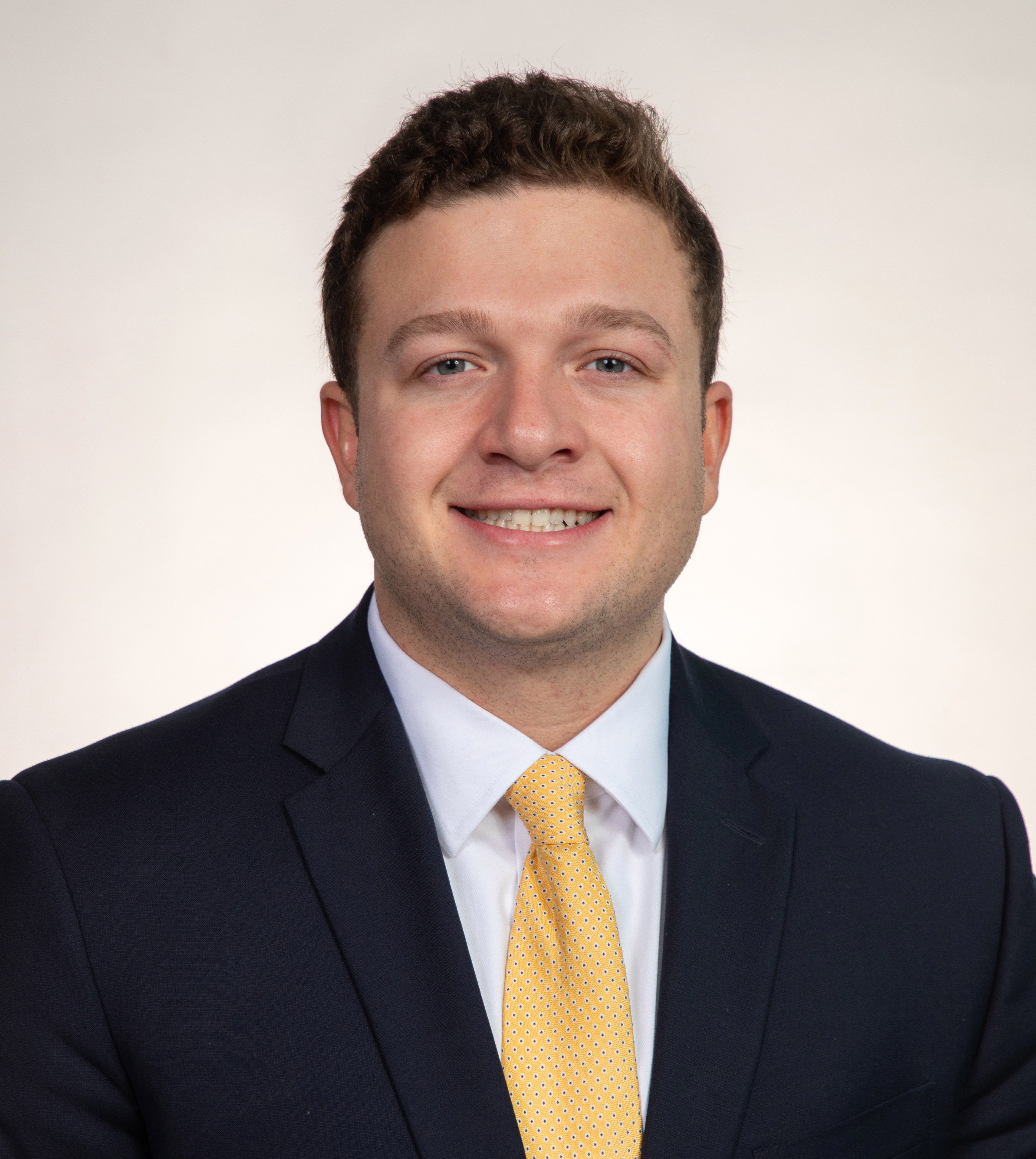 Mika Peter Wolfgang Kuschnitzky, 25
Mika Peter Wolfgang Kuschnitzky, 25
What is your present company/position? My current position is as a mechanical engineering associate within RS&H’s Aerospace Solutions division.
What is your educational and professional background? I am a FAMU-FSU College of Engineering graduate with a bachelor’s and master’s in mechanical engineering.
How did you get into cryogenics? My undergraduate senior design project with NASA Marshall Space Flight Center was how I was introduced to cryogenics. We were tasked with a design-build project to develop an ergonomic LOX quick disconnect apparatus that future astronauts could utilize on the lunar surface. I’ve been fascinated by the field ever since.
Do you or did you have a mentor? My mentor in school was Dr. Mark Vanderlaan who shepherded our senior design team in designing our cryogenic system for NASA. As the lead cryogenic engineer at the National Magnet Laboratory, Dr. Vanderlaan’s expertise in the field was instrumental in our team succeeding and igniting our passion for the field itself.
What awards/honors have you received? I received a spot award (given to an employee for exceptional performance or achievement) from RS&H for my engineering support on a proprietary contract.
What are some of your contributions to the cryogenic field? A few of the contributions to the cryogenic field I have made this early in my career include the development of a cryogenic quick disconnect for the lunar surface, and now I am directly involved at Kennedy Space Center’s Launch Complex 39B as RS&H is supporting NASA on modifying the mobile launcher in preparation for Artemis II.
What do you believe the most important developments in cryogenics are? I believe that as the world ramps up its cadence in traveling out of our atmosphere, safe, reliable and cost-effective cryogenic fueling solutions must be developed for launch infrastructure to sustain the growing demand for traveling to space.
What advances do you hope to see in the future? I hope to see the development of the lunar launch infrastructure come to fruition and contribute to the design of lunar cryogenic systems which would support future generations in traveling among the stars. I believe that the lunar launch infrastructure necessary could be developed within the next 30 years.
Where can readers find out more about your projects? www.linkedin /in/mikakuschnitzky. and www.rsandh.com/solutions/aerospace/
……………………………………
 Mercedes Corrales Rodríguez, 27
Mercedes Corrales Rodríguez, 27
What is your present company/position? I am a project engineer at Cryospain.
What is your educational and professional background? I received my degree in chemical engineering at the University of Castilla-La Mancha, and later, my official master’s degree in chemical engineering. I started working in March 2021 in the field of renewable energy, carrying out green hydrogen production projects from photovoltaic and wind energy. Later I developed an expertise in the world of electric vehicles, participating in the installation of charging points at service stations.
How did you get into cryogenics? My first jobs were related to engineering, but it was very different from what I had always wanted to do. I wanted to develop my professional career focused on my studies, and that is how I got into cryogenics.
Do you or did you have a mentor? Jaime Gutierrez, Cryospain's technical director, is my mentor, a very constant and organized person who is always willing to help and who trusted me from the beginning, for which I am very grateful.
What are some of your contributions to the cryogenic field? I am currently carrying out a project that consists of two skids for the distribution of LH2 to the other elements of the plant. The difficulty is that since it is such a new technology, and there are not many developments yet, we have to face new in-house solutions and proposals adapted to each client and project.
What do you believe the most important developments in cryogenics are? The most important advances in cryogenics are being shown in the development of LH2 projects, which in the long run is surely an essential component given the enormous benefits it has (a good fuel, it does not pollute, it can be created through technologies renewably, etc.). Given the scarcity of reference information, I have steered my work away from conventional standards, exploring new avenues in my process.
What advances do you hope to see in the future? The advancements I hope to see in the future include a greater use of H2 as a fuel for vehicles of all types. From my point of view, with the great importance that is being given to it, in five years we will surely begin to see greater use of this element.
Where can readers find out more about your projects? www.linkedin.com/company/cryospain/ and www.linkedin.com/in/mercedes-corrales-rodriguez/
……………………………………
What is your present company/position? As a graduate research assistant at the HYPER Center, my additional role includes being chief revisualist, designing and building systems to enable visualization for other researchers and showing cryogenic and extraterrestrial phenomena to the center in the way it is meant to be seen.
What is your educational and professional background? As a researcher with Washington State University’s (WSU) Hydrogen Properties for Energy Research (HYPER) Center, I focus on optical systems to explore cryogenic boiling phenomena. My passions for photography and aerospace have led to projects to develop technology for both extraterrestrial and terrestrial application for NASA, Janicki Industries and the Institute for Materials Research. My current work continues this trend and, in the process, enables future human presence on the moon and Mars.
How did you get into cryogenics? Developing a Schlieren imaging system, I harnessed the optical refractive index to detect leaks from cryogenic test systems. In creating and testing that system, I became fascinated with cryogenic flows and boiling; I want to visualize film boiling and how it changes based on flow conditions, introducing to the literature active, optical identification of boiling regime in two-phase hydrogen.
Do you or did you have a mentor? Through the HYPER Center, Dr. Jacob Leachman has given me a place to turn theory into reality and to rapidly learn not just engineering but project management and process. Where else could a scholar hang their cryo-gloves?
What awards/honors have you received? I received the Russell B. Scott Memorial Award for Best Application Paper 2023 at the Cryogenic Engineering Conference; the S. Town Stephenson Award for the WSU Honors College 2023; the President’s Award for Leadership at WSU 2022; the Artemis Award-NASA BIG Idea Challenge 2021; and the Best Technical Paper-NASA BIG Idea Challenge 2021.
What are some of your contributions to the cryogenic field? A liquid nitrogen based carwash for spacesuits on the moon, funded by NASA, provided a technique for the removal of abrasive silica dusts from fabrics with higher efficacy than other removal techniques. It also poses natural synergies with airlock pressurization due to the high expansion ratio of nitrogen upon evaporation. This technique received the Artemis Award from NASA, acknowledging its likelihood for implementation on the upcoming lunar missions.
Currently, I am developing a flow cell to quantitatively image two-phase hydrogen, identifying the conditions for different boiling phenomena; this system will also determine the optical properties of two-phase hydrogen. This data can then inform the evaluation and development of heat transfer correlations and can also inform the design of optical systems for imaging cryogens.
What are the most important developments in cryogenics? The recent transfer and reignition of cryogenic fuel in space opens the door for further use of cryogens in spacecraft. It also enables lunar refueling from electrolyzed ice, potentially cooled in permanently shadowed craters. This refueling necessitates understanding of two-phase flow due to radiative heat flux into transfer lines.
What advances do you hope to see in the future? I’d like to see boots on the moon by 2030, facilitated by better understanding of cryogenic fuels, that will enable extra-terrestrial refueling stations, ultrahigh vacuum, large-scale manufacturing techniques, and analysis of gravitational and radiative effects on biology. Electromagnetic characterization of cryogenic fluids enables the two-phase propellant transfer and mass gauging technologies necessary for this future.
Where can readers find out more about your projects? www.linkedin.com/in/ianwellss/ and www.hydrogen.wsu.edu/
……………………………………
What is your present company/position? I am a graduate research assistant at the HYPER Center.
What is your educational and professional background? I achieved my bachelor’s in mechanical engineering in 2017 with Magna Cum Laude from Washington State University (WSU). From 2018 to 2022, I worked as a control valve project specialist managing the review and repair of any valve, including cryogenic valves. I anticipate receiving my master’s in mechanical engineering this coming fall.
How did you get into cryogenics? In the spring of 2016, I took a system design class taught by Dr. Jacob Leachman where we were tasked to make a hydrogen liquefaction station that could fit into a shipping container–not just theory, changing the world by designing, purchasing and building (with my own two hands) accessibility to hydrogen.
Do you or did you have a mentor? After working in the industry for a number of years, I had an idea to contribute to the world of cryogenic valves. Then I reached out to my mentor Dr. Leachman and we noticed a shared “understanding” of cryogenic valves. As Dr. Leachman developed the equation of state for hydrogen, as well as a countable number of cryogenic technologies, I knew the WSU HYPER Center was the only place to make my technology come to life.
What are some of your contributions to the cryogenic field? While my research is in the prototype phase, leading experts at the Cryogenic Engineering Conference believe the technology I am developing is advanced.
What do you believe the most important developments in cryogenics are? Foreign object debris (FOD) like dirt, frozen impurities, etc., is the leading cause of valve failure in cryogenics. Standard practice in 2024 is to simply say that FOD is the end user’s fault, but good luck! While, yes, it is important to keep these systems clean, isn’t there anything to be done on the side of the valve manufacturer? My research is designing a cryogenic valve that will prevent leakage from FOD as well as develop valve packing that does not require a thermal standoff to operate.
What advances do you hope to see in the future? When a valve fails, operation must be suspended until the valve is fixed. This price of entry is too high for many and delays the rapid development of the field of cryogenic hydrogen. This advancement will be the hydrogen atom to drive the fusion reaction.
Where can readers find out more about your projects? www.hydrogen.wsu.edu


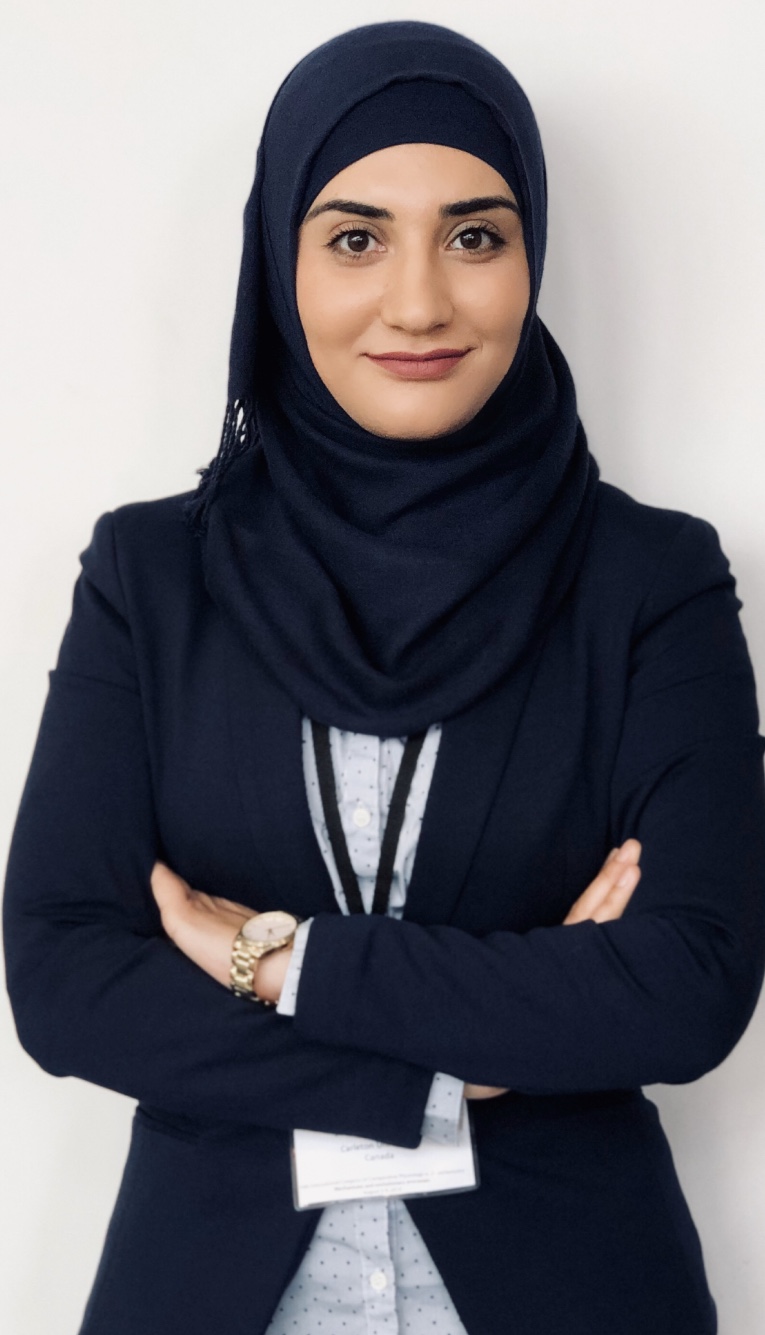 Rasha Al-attar, 32
Rasha Al-attar, 32 Kyle Appel, 24
Kyle Appel, 24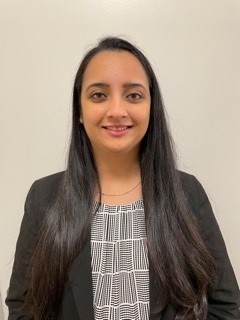 Akanksha Apte, Age: 33
Akanksha Apte, Age: 33 Christopher Edwards, 29
Christopher Edwards, 29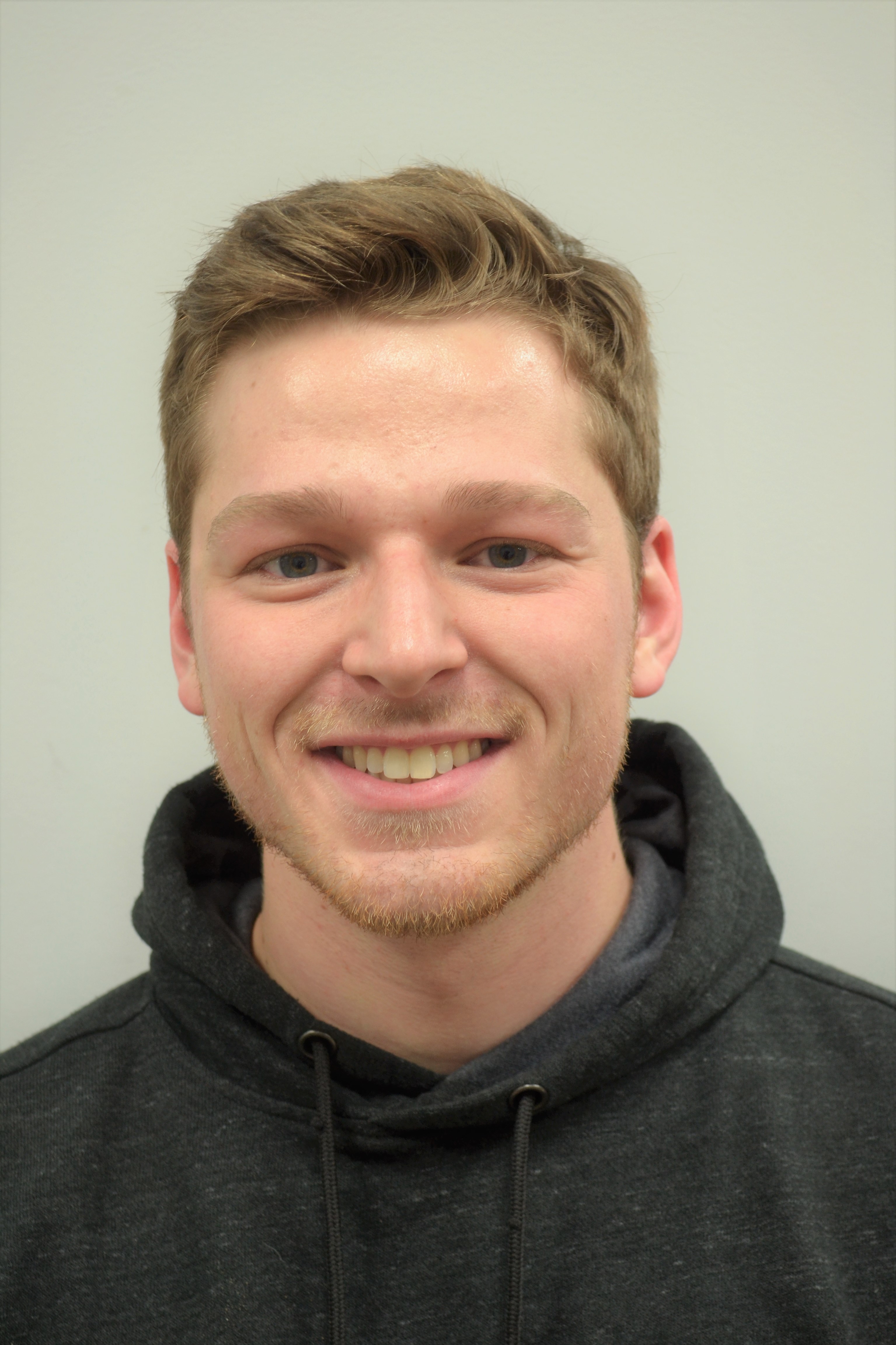 Graham Harrington, 27
Graham Harrington, 27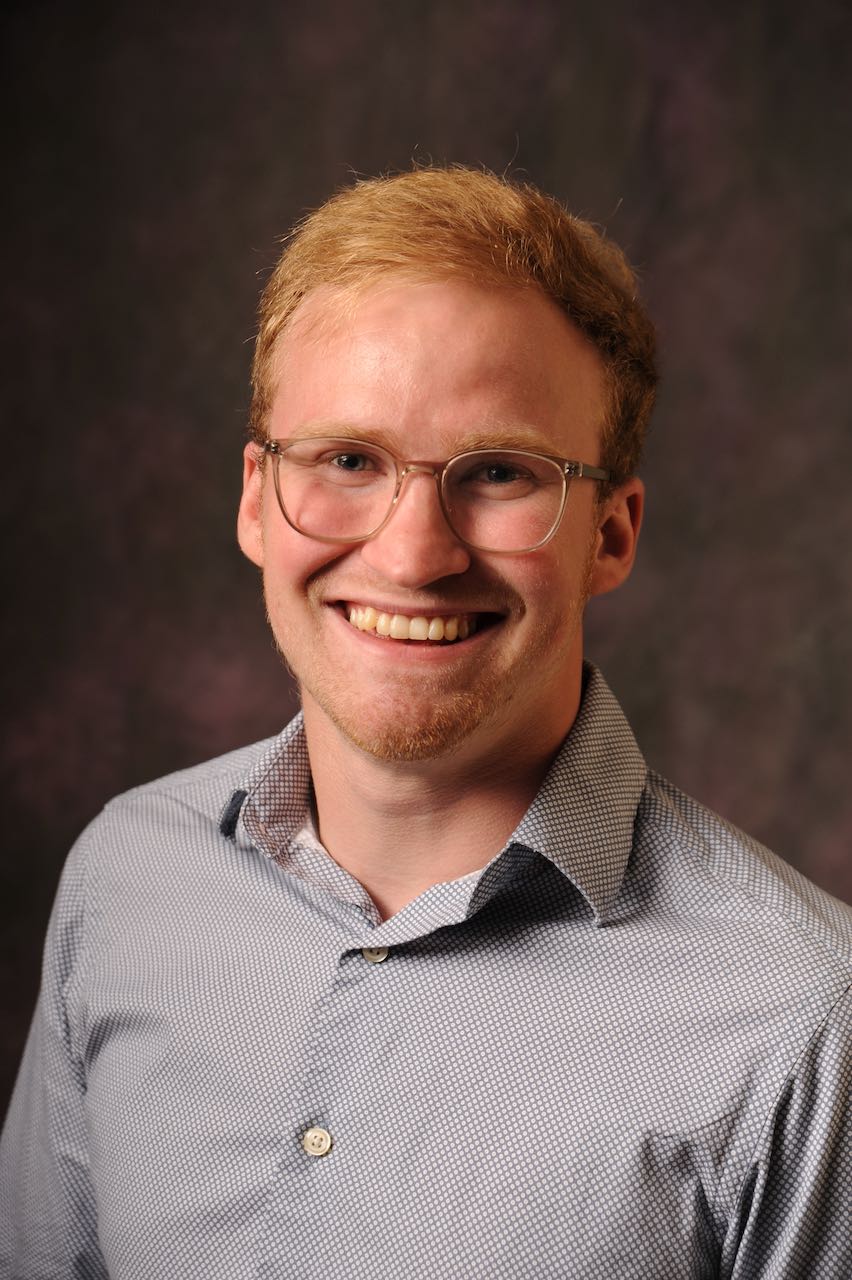 Justin Jessop, 24
Justin Jessop, 24 Ian Wells, 23
Ian Wells, 23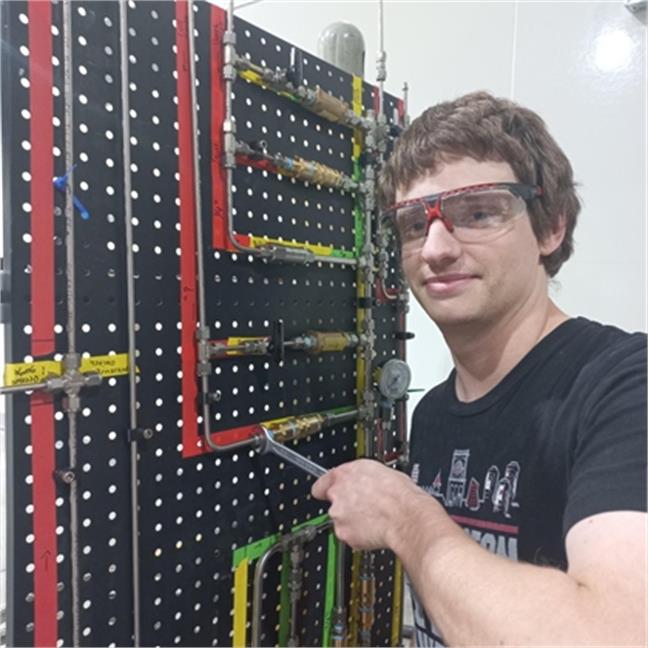 Michael Wood, 30
Michael Wood, 30